The Sundance Film Festival is in full swing and with that comes a ton of screenings.
Over the course of the weekend, screenings ranged from period piece horror movies to emotionally-grueling dramas to Nicolas Cage doing Nicolas Cage things in a post-apocalyptic Western/samurai/supernatural horror movie. Whatever kind of cinema tickles your fantasy, you were bound to find it over these two days of the festival.
I had the chance to check out the New Frontier section of the virtual Sundance Film Festival; which is a virtual reality space that attempts to simulate the experience of socializing with others in person. It can’t quite replicate the real thing (How could it?); but it’s pretty interesting nonetheless, especially since it runs smoothly and the virtual environments are pretty cosmic settings. Best of all, it was cool to interact with Sundance Film Festival attendees from all over the planet, a nifty advantage to this virtual manner.
And then, of course, there were the films. We’ve got a lot of ground to cover — eight different movies! Let’s get down to brass tacks with a concert documentary that’s as one of the best movies of Sundance 2021:
This article contains spoilers.
SUMMER OF SOUL (OR, WHEN THE REVOLUTION COULD NOT BE TELEVISED)
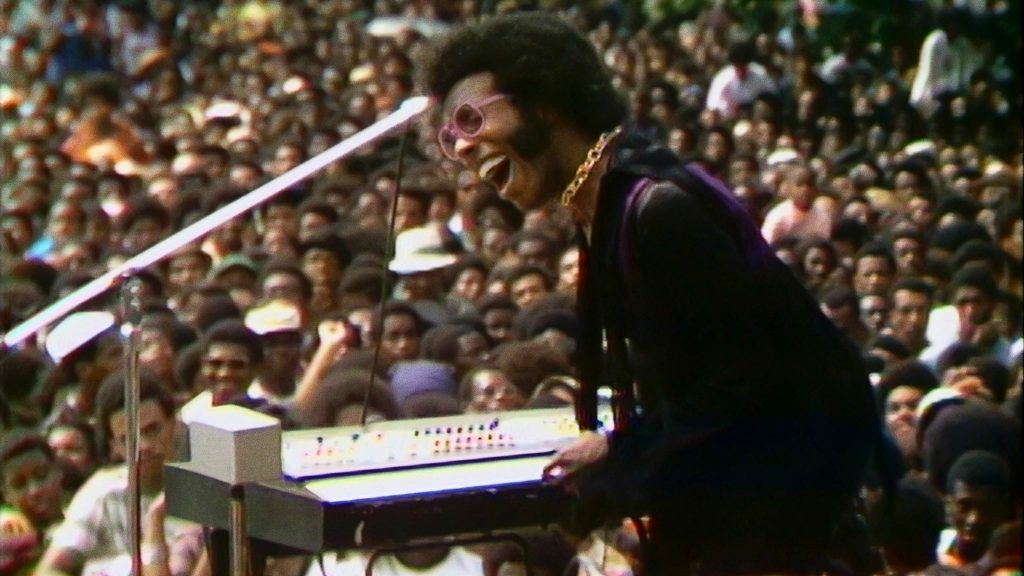
The summer of 1969 was rife with major historical events. Man landed on the moon; Woodstock was happening; and there was also the Harlem Cultural Festival. A series of concerts that saw everybody from Sly & The Family Stone to Nina Simone to Stevie Wonder performing, these shows were a celebration of Black and Latinx cultures widely forgotten in the history books. However, documentary Summer of Soul has breathed new life into this event by presenting footage captured in 1969 of these performances.
Much like David Byrne’s American Utopia from last year, Summer of Soul makes viewers feel like they’re in a packed event. You’re gonna want to get up and dance throughout the musical set pieces of Summer of Soul. How can you not hear The 5th Dimension belting out “Let the Sunshine In” and not want to wildly move your hands and feet?
Through the footage of these vibrant toe-tapping performances, one understands why the energy at this festival was so memorable.
Newly-recorded interview segments underline the greater historical contexts informing these various performances. Stevie Wonder, for example, notes how — against the wishes of his record label — his performance coincided with a desire to be more politically active. Two performers from The 5th Dimension, meanwhile, actually get to watch their performance from 1969. The potent sensation of being awash in wistful nostalgia is so apparent just from their facial expressions. Their non-verbal response to this video alone speaks volumes to how critical this performance was in their lives.
The graceful juggling of interviews with concert footage is the most impactful way Ahmir ‘Questlove’ Thompson makes an impressive feature-film director debut with Summer of Soul. Thompson gracefully leaps from the present to the past, all the while reaffirming how so deeply intertwined they are. Similarly, editor Joshua L. Pearson also impresses with his work in Summer of Soul; particularly in one musical performance where each drum beat cues up a quick cut to a piece of news footage. It’s all so impeccably timed, masterfully using the sounds of the drums to convey a sense of urgency.
When you’re watching Summer of Soul, you’re not just watching a routine concert documentary. You’re watching a celebration of identities and cultures that are so routinely wiped out in all walks of American society. Summer of Soul is keenly aware of those hardships; but the primary focus of director Ahmir ‘Questlove’ Thompson is the same as that fateful 1969 concert series: to use music to empower and humanize the marginalized. Both artistic efforts succeed wildly in that mission.
STREET GANG: HOW WE GOT TO SESAME STREET
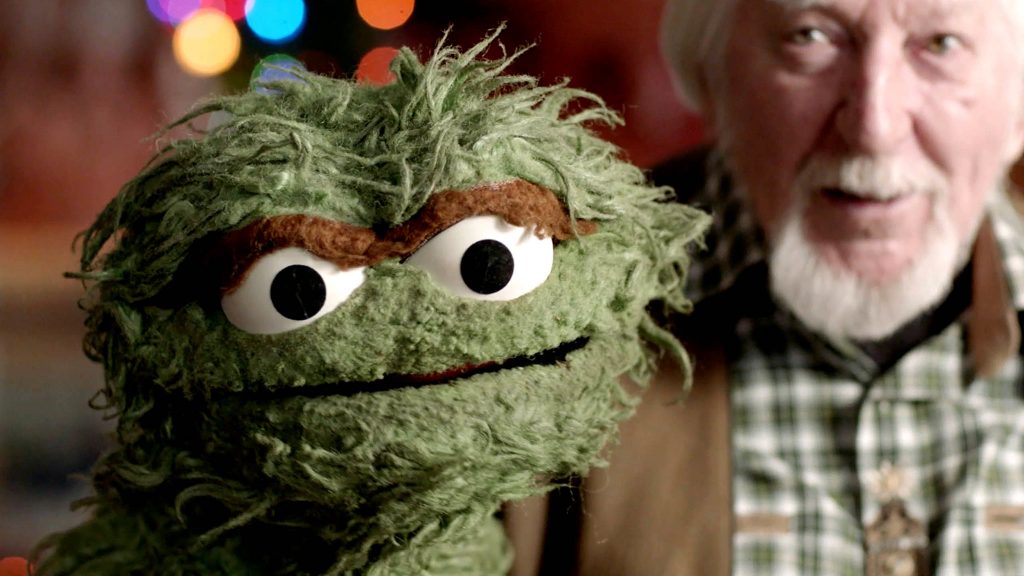
Everybody knows Sesame Street. Run into a stranger on the street and chances are you both could hum the opening bars to the show’s theme song. But do you know the story behind how the childrens’ program came to be?
Street Gang: How We Got to Sesame Street is a new documentary from director Marilyn Agrelo that shows the origin of this groundbreaking series. The film also dedicates time to exploring the individual artists, such as director Jon Stone and songwriter Joe Raposo; who were critical in making Sesame Street a kids’ show like no other.
Being a lifelong Muppets fan, many anecdotes in Street Gang about how Sesame Street came to be rang familiar. However, Agrelo oversees lively retellings of those well-known tales while also delivering behind-the-scenes stories I’d never heard before. The latter comes from the smart decision to focus on people not universally associated with Sesame Street. Puppeteer Fran Brill, for instance, has a unique segment where she talks about her process of going from an unemployed actress with no puppeteering experience to becoming the first female puppeteer on Sesame Street.
That’s not the kind of story you’d find in just any run-of-the-mill biographical rundown of Sesame Street.
Similar accounts from Stone’s daughters about how their father’s depression contrasted with the gleeful show he was bringing to life. It’s also touching to see interview segments with Big Bird puppeteer Carroll Spinney; filmed shortly before his passing in December 2019. His mildly profane interactions with an Oscar the Grouch puppet show that he still had his comic wits about him to the very end.
If there’s one notable issue with Street Gang, it’s that confining the documentary just to the first three decades of the show’s existence feels like a mistake. Not even running 110 minutes with credits, surely more time could have been carved out to look at how the show has evolved in recent years; such as skewing its target-demo down to a younger age group. Street Gang is reasonably comprehensive about a section of Sesame Street’s life, but it could have been even more in-depth if it had expanded its scope.
Street Gang won’t change the way you look at Sesame Street; especially if you’re already a fan of anything Jim Henson-related. That being said, Agrelo and company have delivered a poignant ode to the tiniest details that helped make Sesame Street such a beloved destination.
PASSING
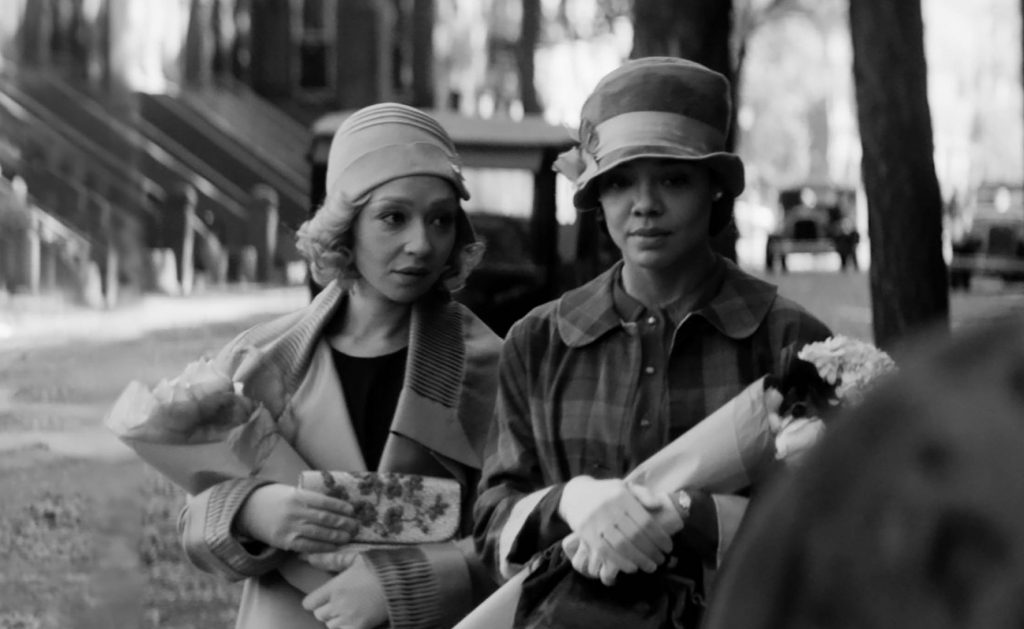
Based on the novella of the same name by Nella Larsen, Passing follows a reunion between former friends Irene Redfield (Tessa Thompson) and Clare Kendry (Ruth Negga). Both are light-skinned women of color able to pass as white; something that Kendry has chosen to do full-time. Redfield spends her days working for the Negro Welfare League, and lives in the New York neighborhood of Harlem with her husband, Brian (Andre Holland), and two children. The two begin seeing each other again sporadically, all the while navigating the ways they’re passing through this world; and not only in terms of skin color.
With Passing, Rebecca Hall goes from being criminally underused in movies like Iron Man 3 to being a writer/director. Her debut effort as a filmmaker is a movie that swings for the fences in countless respects; from its bold subject matter to the decision to film the entire production in black-and-white and with a 4:3 aspect ratio. All this ambition results in a movie that may be soft-spoken but certainly leaves an impact.
I haven’t been able to stop thinking about Passing ever since I finished watching it.
In translating Larsen’s text to screen, Hall’s script stumbles in some areas, chiefly the awkward execution of third-act time jumps. Mostly, she imbues Passing with so much food for thought. Hall’s characters are trapped in an assortment of constricting roles, including Irene’s repetitive work around the house; which Hall frames through familiar shots that give off total Jeanne Dielman vibes. Even without being able to talk openly about their woes, Hall’s camerawork, as well as the language and actions of the characters, still speaks volumes about their interior worlds.
The way characters inhabit different levels of powers in different scenarios is also beautifully reflected in Passing’s writing and blocking. Especially interesting is Irene’s relationship to house-helper Zu (Ashley Ware Jenkins). Here is a person Irene tends to treat with a dismissive air while getting defensive that Zu’s not technically her family’s maid. The same can be said for the differing ways Irene and Brian approach the idea of talking about lynchings with their kids. There are such richly complex dynamics handled with subtlety and dimensionality that effectively conveys the unique perspectives of individual characters.
If such engrossing subtext isn’t enough to grip your eyeballs, the outstanding lead performances will surely do the trick. Ruth Negga as Clare was seemingly airlifted right out of an actual 1930’s movie. Right down to her tiniest gestures, Negga authentically embodies glamorous feminine excess specific to this era. As for Tessa Thompson, she’s a perfect fit for the restrained aesthetic of Passing. Just her eyes are enough to lend such an expressive window into Irene’s mind. Come to Passing for these incredible performances, stay for Hall’s impressively detailed filmmaking.
EIGHT FOR SILVER
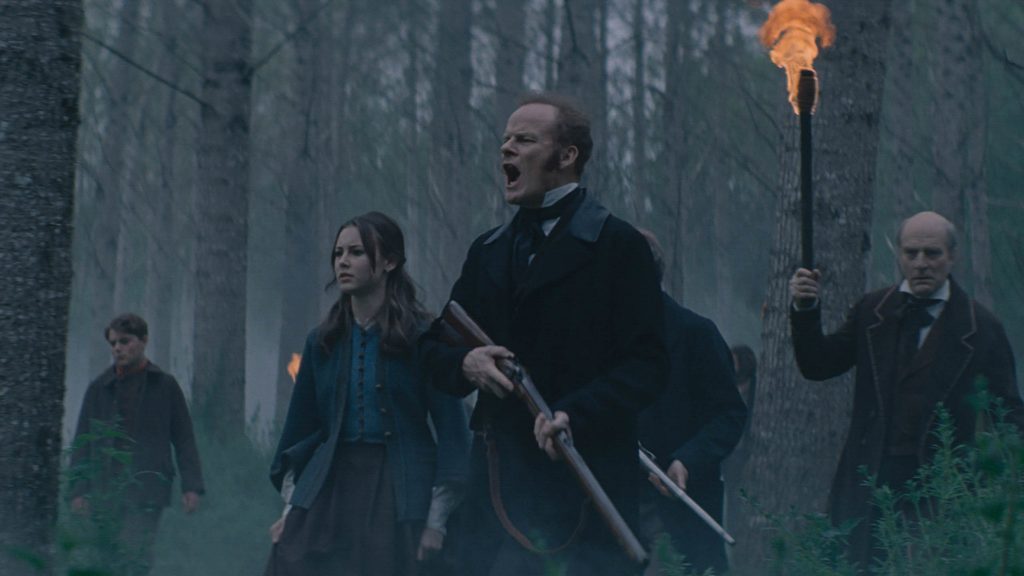
Before a werewolf darts across the screen in Eight for Silver, a monster is already on the screen in the form of Seamus Laurent (Alistair Petrie) and his wealthy associates. They’ve hired mercenaries to slaughter a native Roma clan, all to procure land they feel entitled to. However, a member of this clan has put a curse on Laurent that soon claims his son. This curse involves a vicious werewolf tracking down members of Laurent’s family and any villagers in his way. Pathologist John McBride (Boyd Holbrook) is now tasked with hunting down this beast and grappling with all kinds of horrors; both supernatural and more realistic.
If you’re going to be a horror movie as grimly serious as Eight for Silver, it’d be a good idea to make sure your primary werewolf antagonist doesn’t look like a cross between Ellen Ripley’s Xenomorph spawn in Alien: Resurrection and the Spooky Island Demons from Scooby-Doo. It’s also a good idea, when making a film about the horrors of colonialism, to have more of a role for the colonized population than just being fodder for brutally-graphic death scenes.
Writer/director Sean Ellis has noble intentions with Eight for Silver, but all those intentions can’t mitigate the underwhelming execution. This is especially true regarding the film’s scares, which are undermined by repetition. For instance, Ellis resorts to characters having nightmares only to be awakened by a jump-scare multiple times throughout the runtime. It’s a predictable way of generating scares the first time it happens, let alone the fourth time.
Scenes involving werewolf attacks are filmed with so much shaky-cam that you’re bound to be more puzzled than terrified.
Come to think of it, there are several baffling choices in Eight for Silver in terms of camerawork; including the decision to film the destruction of a Roma village through an uncut wide shot. While I’m sure it took a lot of effort to pull off that shot, it’s very uninvolving on a dramatic level. Filming a grisly climax through slow-motion leaves things so blurry that it begins to look like the camera lens has a smudge on it. The only visual element of Eight for Silver that impresses are the nineteenth-century costumes, which do look well-crafted.
Whether you come to Eight for Silver for thoughtful reflections on the horrors of colonialism or simply werewolf carnage, you’re bound to leave empty-handed.
MASS
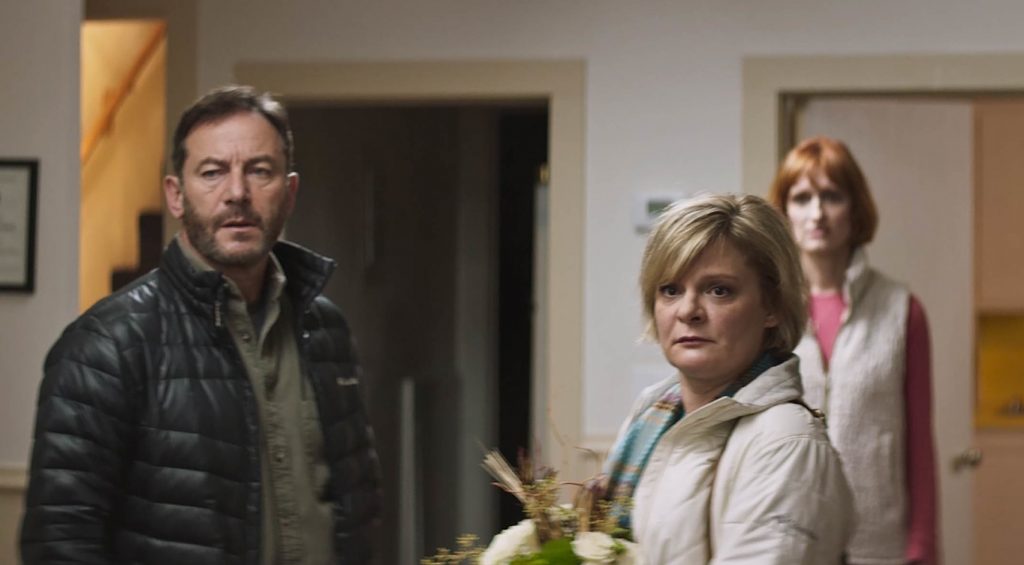
We’ve had a lot of very surprising directorial debuts from actors-turned-filmmakers in recent years. If you’d told someone even five years ago that one-half of Key & Peele would eventually become one of our best modern horror directors, they would have said you were nuts. Add to that list Fran Kranz, most famous for his supporting turn in The Cabin in the Woods; who has now turned in an impressively harrowing directorial debut with Mass.
As Mass begins, the viewer isn’t fully aware of what kind of event is about to happen. We know two couples, Jay (Jason Isaacs) & Gail (Martha Plimpton) and Linda (Ann Dowd) & Richard (Reed Birney), are meeting up in a room in the basement of an Episcopalian Church. By the way the two couples being to interact with each other, it’s clear there’s also a lot of tension in the room. Eventually, it becomes clear what’s brought these two couples together; Linda & Richard are the parents of a school shooter who killed the son of Jay & Gail.
As Mass goes on, the initially restrained dynamic between the two couples breaks away as they become open about what they’ve been going through in the six years since this mass shooting. These conversations, which have been penned in a screenplay by Kranz, are so raw, but also specifically-detailed.
Kranz does fantastic work quietly imbuing each of the four central characters with such distinct personalities.
For instance, the detached language of Richard, who approaches everything like he’s crafting a PR statement, makes for a fascinating contrast with the pain-ridden words of Jay.
In executing a film this intimate, Kranz shows real strength by keeping things restrained. The story is almost entirely confined to one room while an original score is primarily eschewed in favor of keeping the focus on the character’s dialogue. It’s a bold move to keep everything so stripped-down; but in the process, Mass forces the characters to confront their insecurities, their complex thoughts, and the experiences that haunt their minds. Kranz lends Mass such a carefully-crafted quality all without drawing attention to himself. The result is an emotionally-grueling and riveting experience about emotional wounds that never truly heal.
TOGETHER TOGETHER
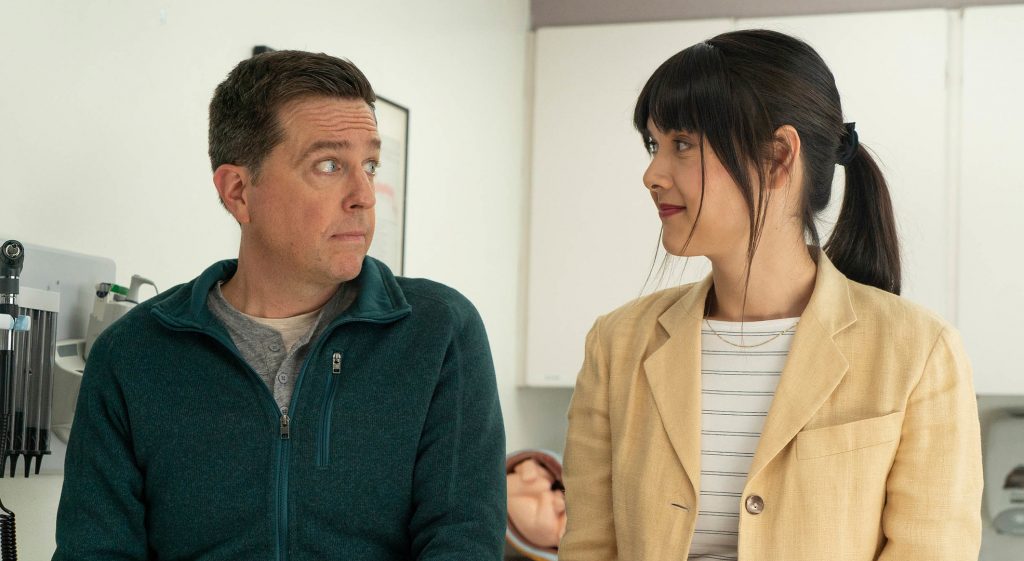
How ironic that Together Together is called that given that its two lead characters are very much loners. One of those two is Matt (Ed Helms), a single man in his mid-forties who’s finally looking to have a kid. The other is Anna (Patti Harrison), who’s been hired by Matt to be the surrogate carrier of his child. Over nine months, these two isolated people will be forced to get to know each other better. It’s gonna be awkward. Sometimes it’ll be downright cringeworthy. But maybe there’s a tender friendship waiting to be unearthed between Matt and Anna.
Despite seeming like it will head in the direction of a traditional rom-com, writer/director Nikole Beckwith’s Together Together remains firmly committed to being a movie about friendship. It’s rare to see platonic male/female pairings in American cinema so to see Together Together embrace this dynamic is a welcome treat.
Beckwith’s script also thrives in finding quiet and distinct ways for Matt and Anna to bond; like having Matt introduce Anna to all nine seasons of Friends.
Less successful are early attempts to wring comedy out of Matt’s paranoia-fueled sense of control over every aspect of Anna’s life. While meant to reflect Matt’s anxieties about everything working out perfectly, it just comes off as the worst kind of off-putting. Early scenes in Together Together also tend to lean way too heavily on having characters endlessly jabber and expect all that dialogue to be inherently humorous in and of itself. It’s a schtick common in Vince Vaughn movies and it’s rarely funny there just as it proves unfunny here.
Fortunately, Together Together is built more upon tender moments of friendship than overdone bits of dialogue-based comedy. Also aiding the later sections of the movie is that Beckwith chooses to shift much of the focus onto Anna. That’s a great decision not only because of how the characters are written but because of Patti Harrison’s engaging performance. In her first lead role in a movie, Harrison is utterly terrific. She sells the vulnerable moments of Anna’s life, she’s relatable, she’s got a killer sense of comic timing. Together Together isn’t a super substantial comedy overall, but Harrison’s performance is one of the unique touches here that helps the project stand out.
MY NAME IS PAULI MURRAY
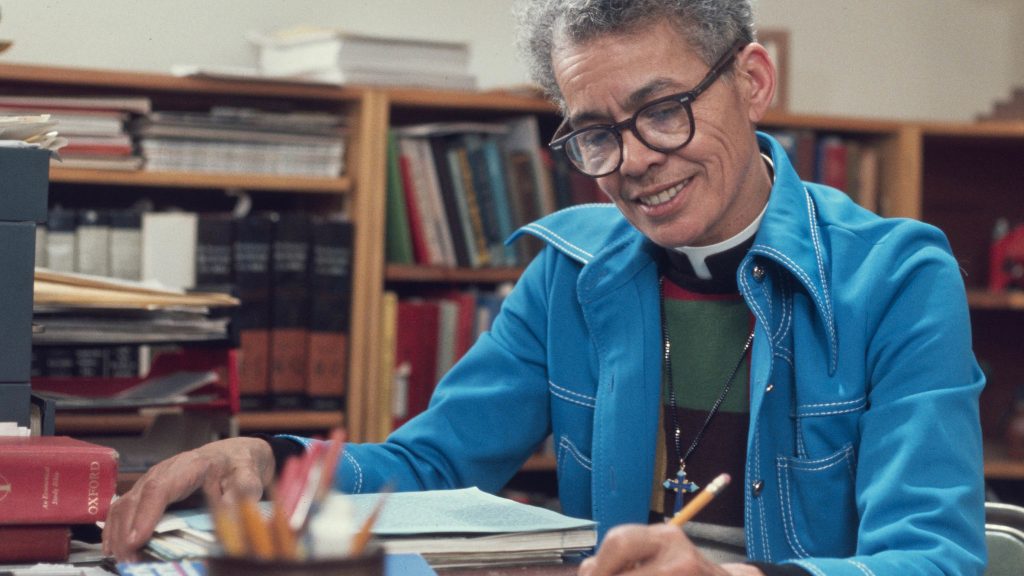
One of the closing interviews for My Name is Pauli Murray observes that not only was the titular subject of this documentary ahead of their time, but their time may not still have come.
Given how the world still treats trans individuals and people of color, this comes off as a tragic and astute point. Even if the world is still unwelcome to so many marginalized communities, at least documentaries like My Name is Pauli Murray allow us a chance to appreciate the contributions of trailblazers like Pauli Murray.
Pauli Murray was a little bit of everything. A lawyer, a professor, a priest, they did it all. Through directors Julie Cohen and Betsy West, My Name is Pauli Murray follows a chronological exploration of Murray’s life. Early highlights of these events include Murray engaging in sit-in protests in Washington D.C. in the 1940s as well as examinations of how their legal expertise proved critical in getting the Supreme Court to weigh in on segregation.
More intimate parts of the production explore Murray’s sexuality as well as their gender identity.
Referred to as “my little boy-girl” by their aunt, letters from Murray to various doctors shown to the audience lend fascinating insight into Murray’s grappling with their gender identity in an age when the vernacular for trans experiences was not mainstream yet. As one interviewee thoughtfully notes, what could Murray have even further accomplished if they had had the resources and tools available for trans people today?
While there is tragedy in Murray not being able to fully explore their own gender identity, My Name is Pauli Murray is not a somber recounting of Murray’s life. This is a movie meant to be a celebration of an unsung part of American history; though one that also isn’t afraid to critique certain parts of Murray’s outlook (such as their attitude towards civil rights protestors of the 1960s). Being able to toggle between adulation and more complex appraisals of Murray’s life makes My Name is Pauli Murray a documentary that’s as multi-faceted as it is insightful.
PRISONERS OF THE GHOSTLAND
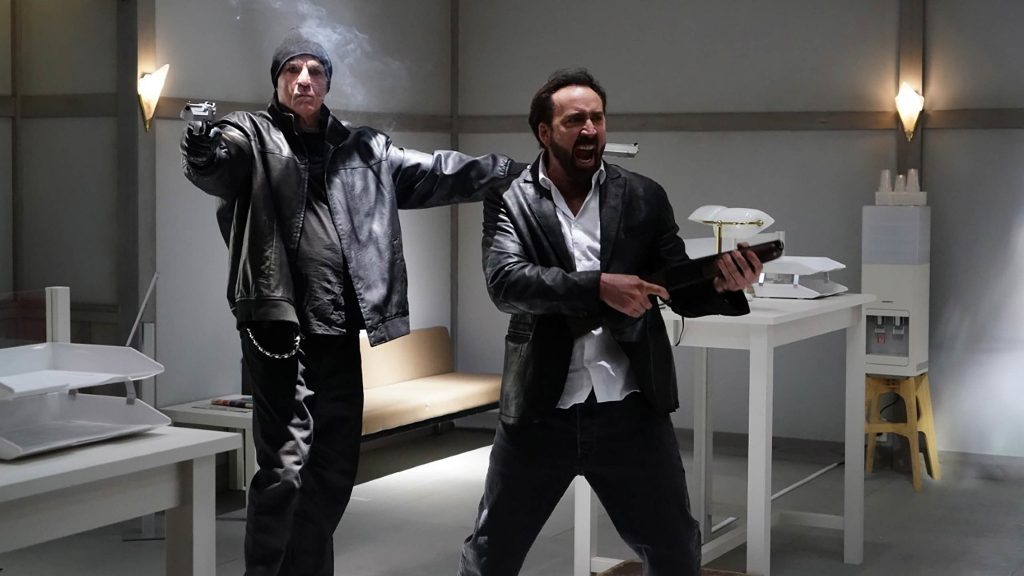
Director Sion Sono makes his first foray into English-language cinema with Prisoners of the Ghostland. Set in Samurai Town, convicted bank robber Hero (Nicolas Cage), is recruited to rescue Bernice (Sofia Boutella), the daughter of the malicious Governor (Bill Moseley). To do this, he’ll have to travel to the Ghostland; which is home to a horde of ghosts looking for a prophesied savior. It’s also a place guarded by a horde of demons so powerful that the terrain is inescapable.
Prisoners of the Ghostland is one of those movies where it might be best to just reduce it down to a laundry list of strange events. Your attitude on whether or not this will be your bag is dependent on whether or not the phrase “Twenty minutes in, Nicolas Cage gets detonators strapped to his testicles” appeals to you. The same applies to the prospect of a samurai named Yasujiro (Tak Sakaguchi) slicing up dudes in a swordfight while Jim Croce’s “Time in a Bottle” solemnly plays on the soundtrack.
Frequently, Prisoners of the Ghostland doesn’t feel like a movie so much as a lucid fever dream you’ve wandered into.
This is an approach that works best when Sono just lets the weird and unsettling imagery carry the movie. Hero just wandering onto a bunch of humanoid people covered in pieces of old mannequins — that’s a super eerie moment. Meanwhile, the inexplicable presence of a bunch of Mad Max-esque figures named Ratman and the Ratclan is delightfully goofy. It’s made all the better by the fact that Prisoners of the Ghostland doesn’t try to explain where those names came from.
By contrast, scenes like the Governor’s overlong explanation for how all the detonators on Hero’s suit work are a lot less interesting. Prisoners of the Ghostland’s strengths very much lie in showing rather than telling. Since it has a bad habit of leaning on clumsy expository dialogue, this makes Prisoners a less consistent experience than other recent avant-garde genre exercises from Cage like Mandy or Color Out of Space.
On its own merits, though, Prisoners of the Ghostland makes for a loopy ride with exquisitely-rendered visuals that alone make it worth a watch. Oh, and if nothing else, you get to hear Nicolas Cage enunciate the word “testicle” like it’s never been enunciated before.
Douglas Laman is a freelance writer providing Sundance Film Festival coverage for Offcultured.
Header: Street Gang: How We Got to Sesame Street (Courtesy of Sundance Institute)
